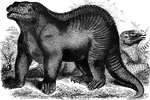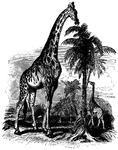
Giraffe
"The giraffe is the tallest of all ruminants, the males not uncommonly measuring fourteen and sometimes…

Giraffe
"The giraffe is the tallest of all ruminants, the males not uncommonly measuring fourteen and sometimes…
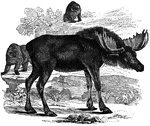
Moose
"This animal is the largest of the deer kind, being taller than thehorse. Its horns weigh fifty or sixty…
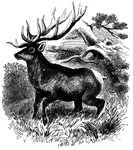
American Elk
"is a large and noble species, resembling the red deer of europe; is has tall, round, branching horns,…
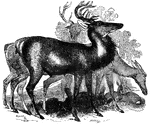
Male American Deer
"It is about the size of the European fallow-deer, and resmebles it in temper and character; the color…
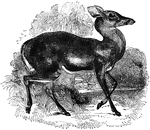
Female American Deer
"It is about the size of the European fallow-deer, and resmebles it in temper and character; the color…
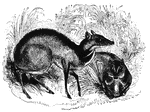
Napu Musk Deer
"Is two feet long and nine inches high; the eyes large and brilliant; the tail short; the general color…
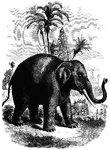
Asiatic Elephant
"This elephant differs from the African species, not only in size and in the characters of the teeth…
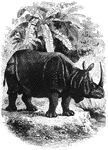
Indian Rhinoceros
"The head and neck are rather short; the eye is small and lateral, and the snimal cannot see in front,…
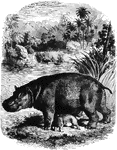
Hippopotamus
"Of this the muzzle is exceedingly thick and blunt, the head is very large, but the greater part of…
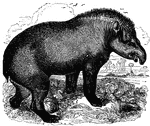
Tapir
"It is a large animal, measuring six feet in length, and is of a uniform brown color. It inhabits the…

Beluga Whale
"When young it is black, when mature white, sometimes having a yellowish or rosy tinge. It is twelve…

Porpoise
"This is from four to eight feet long, and nearly of a black color above, beneath whitish." —…

Manatee
"It is of a gray-black color, nine or ten feet long, and has vestiges of nails on the edges of the flippers,…

Dugong
"In its habits resembles the manatees, but it exceeds them in size, full grown individuals measuring…
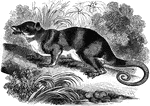
Yayock
"Resembles the otters, having palmated feet, and swimming with facility." — S. G. Goodrich, 1885
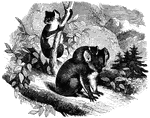
Koala
"Large as a moderate sized dog. It has long, thick and rather course fur, of an ashy-gray color; its…
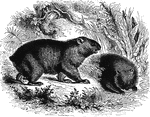
Wombat
"A short-legged, thickset animal, the body two feet long, the tail half an inch long. It lives in burrows…

Clermont
The Clermont, Fulton's experiment boat, was constructed under the personal supervision of Fulton,…

Fraser Burial
Fraser's burial-place. The hill on which the 'great redoubt' was erected, and where General Fraser was…
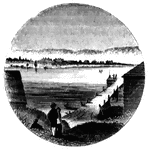
Chimney Point
Chimney Point Landing. This view is taken from the green in front of the inn at Chimney Point, looking…
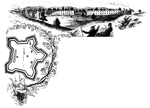
Western Line of Barracks
Western line of barracks. There were four large buildings used for barracks within the fort, the walls…
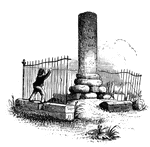
Wolfe's Monument
Wolfe's Monument. Since 1848, the remains of this monument have been removed, and a column forty feet…
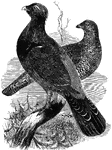
Capercaille
Also known as the wood-grouse, the capercaille averages about three feet in length and feeds on berries…
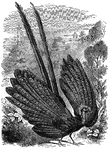
Argus Pheasant
Native to Sumatra and India, the argus pheasant can measure up to five feet in length.
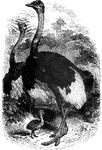
Ostriches
A large, flightless bird, the ostrich measures six to eight feet tall, and is native to the sandy desert…
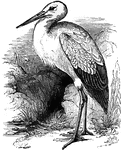
White Stork
Measuring about three feet in length, the white stork migrates to Europe during the summer, and back…
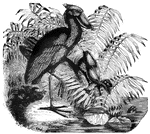
Balœniceps
About three feet, nine inches in height, the balœniceps is native along the banks of the White…
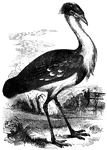
Black-Billed Bustard
Found in India, the black-billed bustard can measure up to four and a half feet in length.

Numidian Crane
Averaging about three feet in length, the numidian crane makes its home in Africa, though it has been…

Balearic Crane
The balearic crane (also known as the crowned crane) stands about four feet high, and is easily domesticable.

Natatores
A group of birds of the order natatores, whose webbed feet are well adapted for propelling them on and…
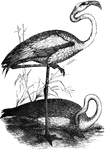
Flamingoes
The American flamingo stands about five feet tall, and is found throught tropical America, including…
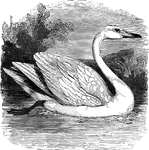
Mute Swan
Measuring up to five feet in length, the mute swan is found throughout Europe, and has long been domesticated…
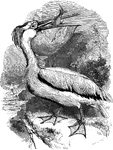
Common White Pelican
The common white pelican measures about five to six feet in length, with a wingspan of approximately…
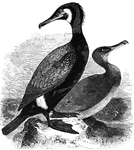
Black cormorant
The black cormorant averages about three feet in length, and is found in Greenland, as well as a long…
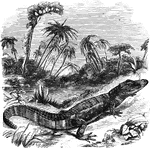
Alligator
The Mississippi alligator grows to a length of fourteen or fifteen feet, inhabiting lakes, rivers, and…
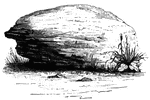
Brant's Rock
Brant's Rock. This rock, which is about four feet high, lies in a field on the left of the road leading…

Chambers
Appearance of the chambers. The miners, when they branch off from the main shaft or avenue, leave pillars…

Variegated lizard
Found in Brazil and Guiana, the variegated lizard (or teguexin) preys on mice, frogs, and other small…
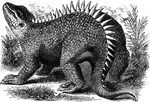
Hylaeosaurus
The hylaeosaurus measured between twenty and thirty feet in length, and fed on vegetation.

Golden Tree Snake
"Four to five feet long; color yellowishgray, cleaning with a pale golden hue, and dotted with whitish…
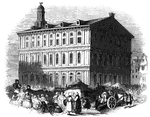
Faneuil Hall
"Faneuil Hall has been denominated 'the cradle of American liberty,' having been the popular gathering-place…
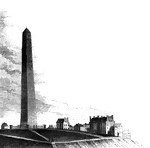
Bunker Hill Monument
"Bunker Hill Monument. This monument stands in the center of the grounds included within the breast-works…
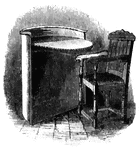
Speaker's Desk and Winslow's Chair
"Speaker's desk and Winslow's chair. This desk is made of ash. The semicircular front is about three…
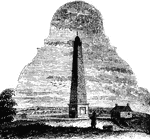
Groton Monument
"Monument at Groton. This is a view from the southwest angle of old Fort Griswold, looking northeast.…

Gaspee Point
"Gaspee Point. This view is from the bank of the cove just below the Point, looking northeast, showing…

Society of the Cincinnati
"Society of the Cincinnati, member's certificate. This engraving is a fac simile of a certificate, about…

Fort Putnam
"Interior of Fort Putnam. This little sketch is a view of the remains of the casemates, or vaults, of…

Alleghany hell-bender
"It is one to two feet long, dark slate color, feeds on worms, crawfish, fishes, and aquatic reptiles.…

Siren lacretina
"Two feet long, black above and dusky beneath. It is of an eel-like form, lives in the muddy water of…
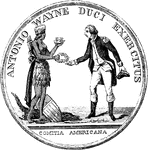
Wayne Medal Front
"Gold medal awarded by Congress to General Wayne. This is a representation of the medal, the size of…
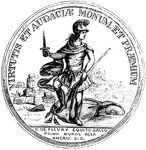
De Fleury Medal Front
"Medal awarded to Lieutenant-colonel De Fleury. This is a representation of the medal, the size of the…
Large Spotted Dogfish
"Two to three feet long, haunts deep water, and feeds on small fish and crustacea. Found on the British…

White Shark
"Has the body elongated, swims with great ease, measures from fifteen to twenty feet, is extremely voracious,…

Thresher Shark
"Is twelve to eighteen feet long, the tail nearly as long as the body; it uses this member for attacking…

Porbeagle
"Six feet long, and derriving its name from a resemblence of form to the porpoise. Common in European…

Hammerhead Shark
"Having a body like other sharks, but with a double snout like a double-headed hammer, and having an…
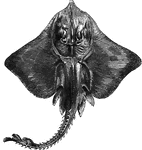
Bordered Ray
"Is two to three feet long, including the tail. The flesh is tolerably food, common on European coasts"…
